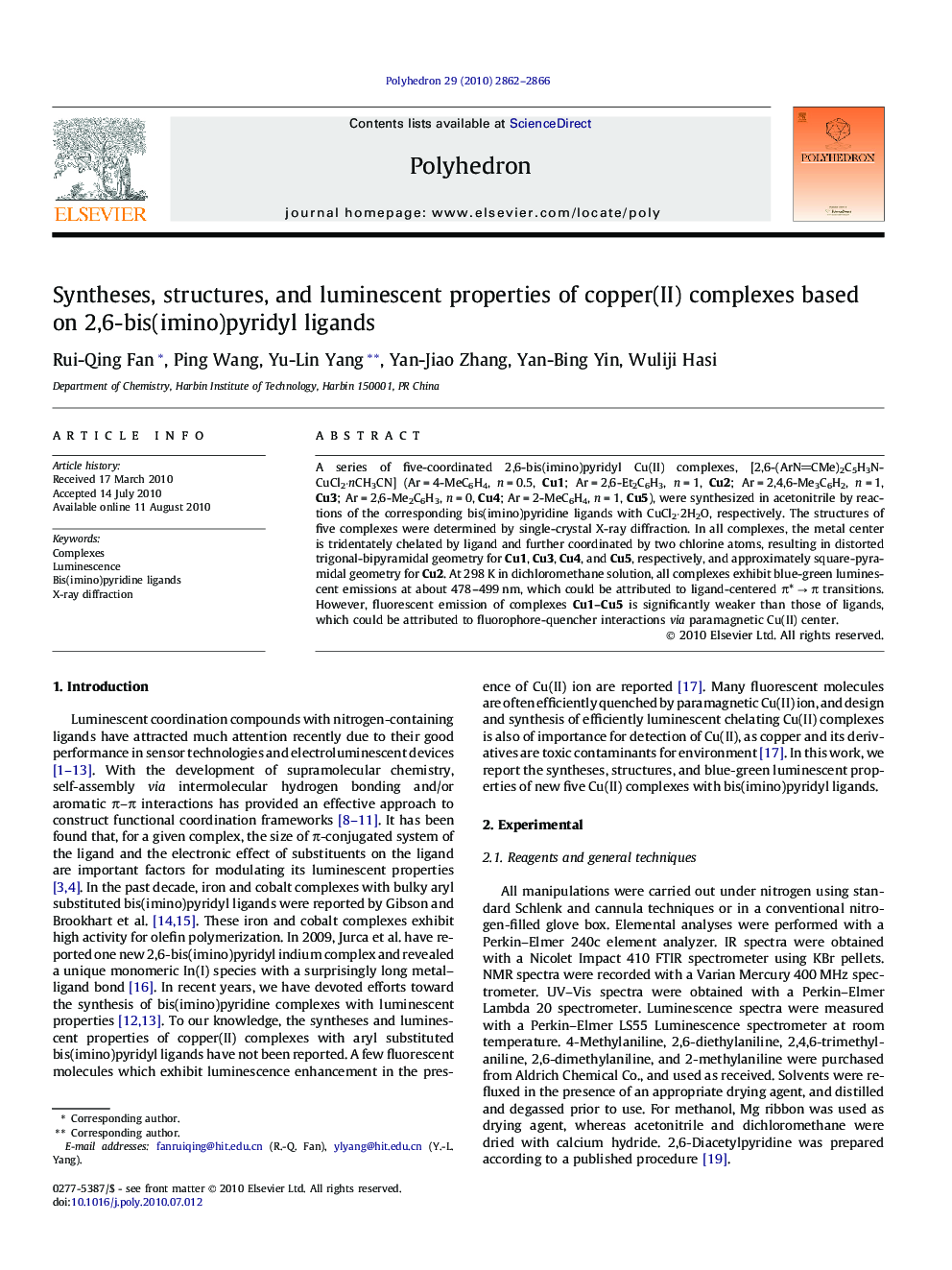| Article ID | Journal | Published Year | Pages | File Type |
|---|---|---|---|---|
| 1336574 | Polyhedron | 2010 | 5 Pages |
A series of five-coordinated 2,6-bis(imino)pyridyl Cu(II) complexes, [2,6-(ArNCMe)2C5H3NCuCl2·nCH3CN] (Ar = 4-MeC6H4, n = 0.5, Cu1; Ar = 2,6-Et2C6H3, n = 1, Cu2; Ar = 2,4,6-Me3C6H2, n = 1, Cu3; Ar = 2,6-Me2C6H3, n = 0, Cu4; Ar = 2-MeC6H4, n = 1, Cu5), were synthesized in acetonitrile by reactions of the corresponding bis(imino)pyridine ligands with CuCl2·2H2O, respectively. The structures of five complexes were determined by single-crystal X-ray diffraction. In all complexes, the metal center is tridentately chelated by ligand and further coordinated by two chlorine atoms, resulting in distorted trigonal-bipyramidal geometry for Cu1, Cu3, Cu4, and Cu5, respectively, and approximately square-pyramidal geometry for Cu2. At 298 K in dichloromethane solution, all complexes exhibit blue-green luminescent emissions at about 478–499 nm, which could be attributed to ligand-centered π* → π transitions. However, fluorescent emission of complexes Cu1–Cu5 is significantly weaker than those of ligands, which could be attributed to fluorophore-quencher interactions via paramagnetic Cu(II) center.
Graphical abstractA series of five-coordinated 2,6-bis(imino)pyridyl Cu(II) complexes, [2,6-(ArNCMe)2C5H3NCuCl2·nCH3CN] (Ar = 4-MeC6H4, n = 0.5, Cu1; Ar = 2,6-Et2C6H3, n = 1, Cu2; Ar = 2,4,6-Me3C6H2, n = 1, Cu3; Ar = 2,6-Me2C6H3, n = 0, Cu4; Ar = 2-MeC6H4, n = 1, Cu5) were synthesized, which exhibit blue-green luminescent emissions at room temperature in dichloromethane solution.Figure optionsDownload full-size imageDownload as PowerPoint slide
